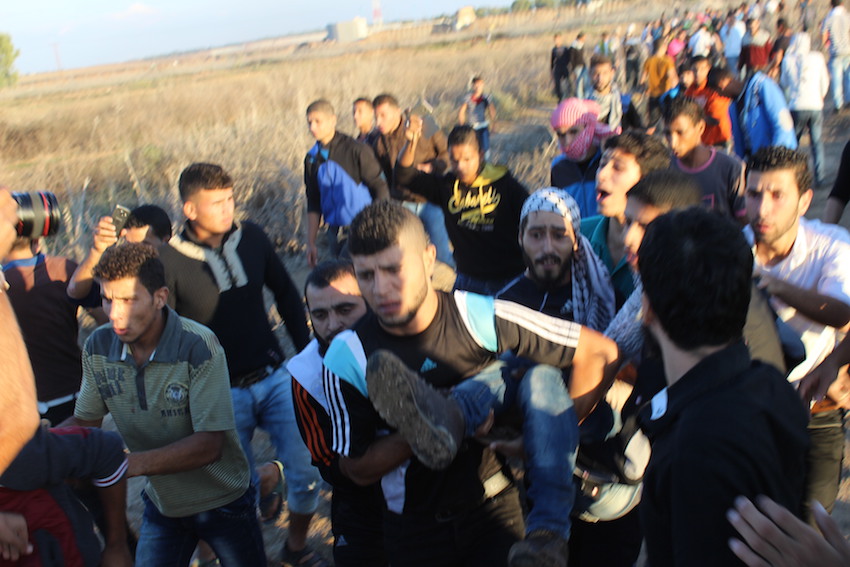Tag: Live Ammunition
-
Hebron rages against ethnic cleansing of its youth at funeral for five young martyrs
31st October 2015 | International Solidarity Movement, al-Khalil team | Hebron, occupied Palestine Today, tens of thousands of mourners gathered for the funerals of five Palestinian youth murdered by Israeli forces in occupied al-Khalil (Hebron). After the funeral, Israeli forces violently attacked mourners demonstrating at Bab al-Zawweya, injuring dozens. Tens of thousands of mourners gathered…
-
Images from Gaza: Another brutal Friday
31st October 2015 | International Solidarity Movement, Gaza team | Gaza Strip, occupied Palestine Images from clashes yesterday, October 30th in Nahel Oz (Shijaia), Occupied Gaza Strip. All photos credited to ISM, Gaza. By the end of clashes yesterday, Minister of Health Dr. Qadra announced 46 people had been injured, including paramedics. Israeli forces met…
-
Video: Israeli forces executing wounded youth in Occupied Hebron
30th October 2015 | International Solidarity Movement | al-Khalil, occupied Palestine On October 29th Mahdi Mohtaseb was executed by Israeli forces at the Salaymeh (160) checkpoint, near the Ibrahimi Mosque in the old city of al-Khalil (Hebron). The 23-year-old from Jabal Johar, who was employed in a local sweets shop, was supposed to meet his…



